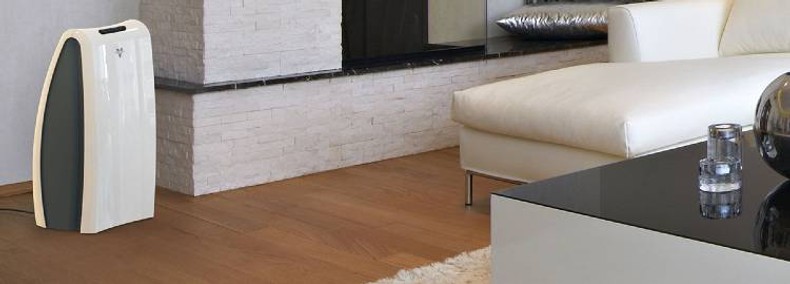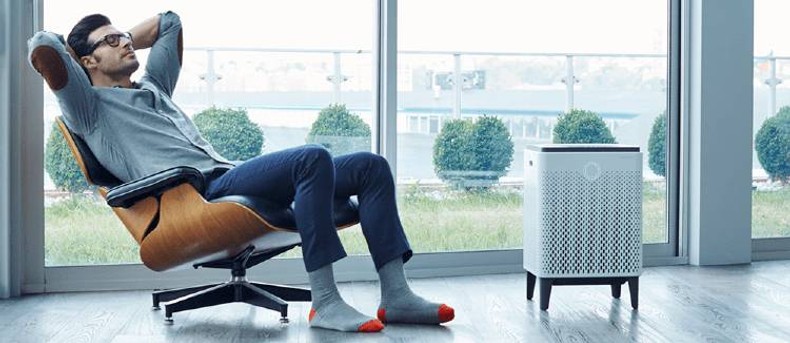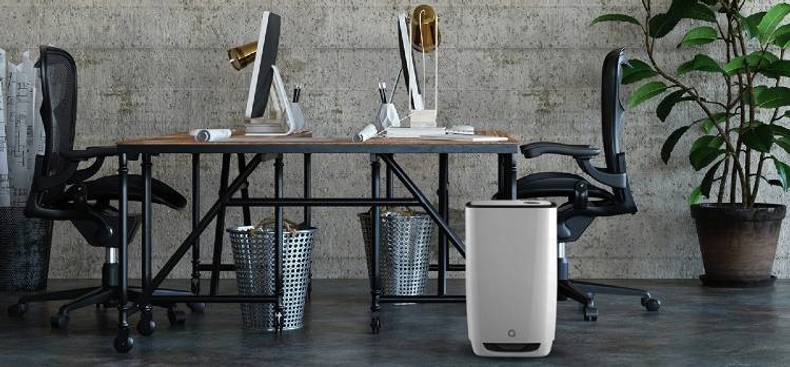Many of us suffer from allergies and asthma, causing us to constantly think about our indoor air quality. How can we improve it and how can we create a healthier indoor environment? Commonly an air purifier is heralded as the solution - but how exactly do air purifiers work?
Keep reading to learn more or click the links below to navigate quickly throughout the article:
- How Do Air Purifiers Work?
- How Air Purifier Filtration Works
- Air Purifier Sizing
- Learn More About Air Purifiers
How Do Air Purifiers Work?
 Most air purifiers operate on a simple basic principle - air is drawn from your room, passes through the air purifier where it is cleaned through some combination of filtration that captures microscopic particles and irritants before the cleaned air is released back into your room.
Most air purifiers operate on a simple basic principle - air is drawn from your room, passes through the air purifier where it is cleaned through some combination of filtration that captures microscopic particles and irritants before the cleaned air is released back into your room.
Not only air purifiers are created the same though. The more air that passes through your air purifier, the cleaner the air in your room will be. The frequency that an air purifier cleans all of the air in a given per hour is known as Air Changes Per Hour or ACH. The higher the ACH, the more frequently the air in your room is thoroughly cleaned.
Robust brands like Austin Air air purifiers are known for their high ACH ratings, making them a must-have solution for effective air purification in the most sensitive locations.
How Air Purifier Filtration Works
 Now you know the basics of how air purifiers work, it's time to dig in a little deeper. If air purifiers draw contaminated, dirty air through filtration, what does that mean? What are the different types of filters and is one better than another? Common air purifier filtration types include:
Now you know the basics of how air purifiers work, it's time to dig in a little deeper. If air purifiers draw contaminated, dirty air through filtration, what does that mean? What are the different types of filters and is one better than another? Common air purifier filtration types include:
HEPA Filtration
Probably to most recognizable of filtration options, air purifiers with HEPA filtration are usually what people think of when they think of air cleaning.
High-Efficiency Particulate Air (HEPA) filters have been around since World War II and are the gold standard in air cleaning. They're guaranteed to trap 99.97% of airborne particles as small as 0.3 microns which are commonly microscopic particles and allergens like dust, smoke, chemicals, pollen, pet dander, and more.
Carbon Filters
Designed to eliminate odors, air purifiers with carbon filtration are great at absorbing odors. They help to promote fresh-smelling indoor air and are great for homes with pets or those concerned about cooking and other routine household odors. As the air passes through a carbon filter, the activated carbon attaches to the odorous particles and inactivates them.
Carbon filtration is also beneficial for those suffering from Multiple Chemical Sensitivity (MCS) since the filters can eliminate triggering odors like perfumes, cleaning chemicals, and more.
|Shop All Air Purifiers With Carbon Filtration|
Germ Treatment/UV Light Filtration
Another type of filtration system commonly found with air purifiers is germ treatment/ ultra-violet (UV) light filtration. As air passes through the air purifier, UV light is designed to quickly kill viruses, bacteria, and fungi on contact.
Germ treatment/UV light filtration systems are also great for helping to protect other filters inside of the air purifier from biological and viral contamination.
|Shop All Air Purifiers With Germ Treatment/UV-Light Filtration|
Medical-Grade Filtration
Offering better-than-HEPA filtration, air purifiers with medical-grade filtration are typically used in commercial settings like offices, medical facilities, dental practices, and more.
Capable of capturing airborne even smaller than the 0.3 microns captured by HEPA filters, medical-grade air purifiers are effective solutions for situations where only the cleanest possible air is not just a desire but a necessity.
|Shop All Medical-Grade Air Purifiers|
Ionizer Filtration
Using electrostatic filtration, ionizing air purifiers create negative ions that attach to irritants in the air. As the air passes through the unit, the charged particles are too heavy to remain in the air, allowing them to be trapped and eliminated by the air purifier.
|Shop All Ionizer Air Purifiers|
Air Purifier Sizing
 Knowing how air purifiers work on a technical level is only one part of finding the right air purifier for your home or business. There are a few other items to consider about how air purifiers work:
Knowing how air purifiers work on a technical level is only one part of finding the right air purifier for your home or business. There are a few other items to consider about how air purifiers work:
- Combo Filtration: On many models, filtration isn't an either/or selection. The majority of air purifiers feature some combination of filters, like a carbon filter and a HEPA filter for example. Look for options that match your individual needs.
- Room Size: Not all air purifiers cover the same size rooms. To get the most effective cleaning performance, and highest ACH rating possible, you want to select a model that's designed for your room size. We offer a variety of options including choices for small, medium, large, and extra-large rooms.
Learn More About Air Purifiers
Are you interested in learning more about air purifiers? Check out some of our other handy resources to find out how to shop for an air purifier, questions commonly asked about air purifiers, the top air purifiers, and much more.
- Air Purifier Buying Guide
- 5 Things to Consider When Buying an Air Purifier
- Frequently Asked Questions About Air Purifiers
- What Is a Virus and Bacteria Air Purifier and How Do They Work?
- Best Desktop Air Purifiers
- Top Allergy Air Purifiers
Still Have Questions?
For more information about air purifiers, shop our products and visit our Knowledge Center. Not sure what's best for you? We can take the guesswork out of decision-making. Contact our product experts toll-free at 1-800-934-9194. We want to help you make your indoor environment a healthy one.


